A History of the Forest of Dean Hospitals
A short history of the Dilke and Lydney hospitals in the Forest of Dean.
Lydney and Dilke Hospitals closed in Spring 2024. Local historian Averil Kear has provided these abridged accounts of the histories of both hospitals. For further information, visit the Forest of Dean Local History Society website.
Dilke Memorial Hospital 1923 - 2024
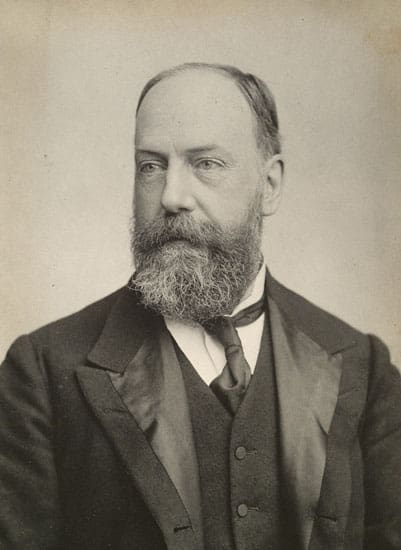 Sir Charles Wentworth Dilke became MP for the Forest of Dean in 1892. He belonged to the Liberal Party.
Sir Charles Wentworth Dilke became MP for the Forest of Dean in 1892. He belonged to the Liberal Party.
He worked hard for miners’ rights and was very popular locally. Soon after he died in 1910 a newspaper report stated: “Not even the death of a monarch could have stirred the feelings of the Forest community”.
The local community decided to set up a new hospital in memory of Sir Charles Dilke saying:
“… looking to the life-long work of Sir Charles on behalf of the labouring poor, there could not be a better purpose than the relief of physical suffering incidental to dangerous industries. The Committee therefore promise that the Memorial should take the form of a Free Hospital, to be called “The Dilke Memorial Hospital…located among the workers of his own constituency…”
The planned hospital needed ‘several thousand pounds’ to build, equip and run. This money was raised both within and beyond the Forest. The site agreed for the new hospital was central to the Forest, and in pleasant surroundings. The land was purchased from the Commissioner of Woods for £331 10s. Trees were cleared from the site, on the Cinderford side of the bridge next to Lightmoor Colliery.
“To have one’s name associated with means devised for the relief of human suffering must ever be among the loftiest aspirations of the human soul.”
Sir Charles Wentworth Dilke – MP for the Forest of Dean 1892-1911
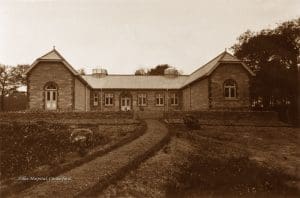 Funding for the build came through donations from across England, including the Agha Khan, and weekly contributions from employees of the Forest of Dean Collieries paying 1d from their salaries. £6,407 18s 9d was raised to build and run the new “Dilke Memorial Hospital”.
Funding for the build came through donations from across England, including the Agha Khan, and weekly contributions from employees of the Forest of Dean Collieries paying 1d from their salaries. £6,407 18s 9d was raised to build and run the new “Dilke Memorial Hospital”.
The First World War (1914 – 1918) delayed the planned build. The foundation stone was laid on June 29th, 1919. The original proposal was for a two-storied building, to which wings could be added if required. Building costs increased during the war and the plans changed. A single floor building, designed as a letter “H” was built. The entrance, outpatients’ facilities, and staff quarters were placed in the centre with a ward in each wing, with eight beds. There was also one single bed ward next to the operating theatre, and accommodation for the staff. This included two nurses’ bedrooms, a sitting room, and rooms for the matron.
The hospital opened in June 1923. The opening ceremony took place on a beautiful sunny day. It was well attended by people from all parts of the Forest.
”A meeting of the joint authorities of the West Dean Rural and Coleford Urban District Councils was held to consider the terms on which the East Dean Joint Hospital Board were prepared to admit cases of infectious disease to the Wilderness Isolation Hospital.”
Gloucester Citizen 2 November 1928
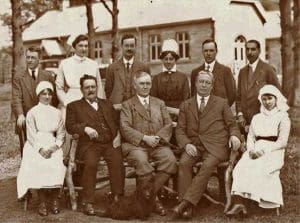 Increased accommodation was soon necessary. A sum of £6,300 was needed for the new extensions. Mr Rowlinson, the miners’ agent, suggested that for six or twelve months, employee’s increase their contributions to 1½d. The remainder was to come from other benefactors. ‘If there are some good people who have got more than they know what to do with, let them come this way and we will find a way to spend it.”
Increased accommodation was soon necessary. A sum of £6,300 was needed for the new extensions. Mr Rowlinson, the miners’ agent, suggested that for six or twelve months, employee’s increase their contributions to 1½d. The remainder was to come from other benefactors. ‘If there are some good people who have got more than they know what to do with, let them come this way and we will find a way to spend it.”
The new wing opened in September 1926. The number of beds increased to 31. For the first time there was a separate ward for children. There was also a new room for admitting casualties, an X-ray room, a Board room, nurses’ quarters, and a caretaker’s cottage. A maternity department was added in 1940 that Queen Mary visited in 1945.
In 1946 the Government’s National Health Bill had been introduced. This led to the creation of the National Health Service. The Dilke Memorial Hospital became part of the new National Health Service in July 1948. A final meeting of the hospital management board marked the end of an era. Between 1923-1948 the Dilke had received over 17,000 patients.
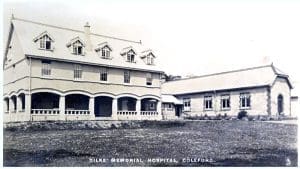 Money continued to be raised for the Dilke after the move to NHS management. Concerts, fetes, teas, dances, and sporting events took place, many organised by the Hospital League of Friends. Local people often left bequests in their wills or donated artwork.
Money continued to be raised for the Dilke after the move to NHS management. Concerts, fetes, teas, dances, and sporting events took place, many organised by the Hospital League of Friends. Local people often left bequests in their wills or donated artwork.
The Friends of The Dilke Hospital obtained Charity Status in 1981. The funds they raised helped to purchase new equipment and furnishings benefiting staff and local population.
The Maternity Unit closed in 1981 to local opposition. Traditionally babies needed to be born within the Hundred of St. Briavels to have the right to become a Freeminer. Midwives continue to support homebirths.
”Yesterday was ‘Hospital Sunday’ in the Dean Forest and hundreds flocked to the venue – a clearance in the woods between Coleford and Bream known as the Scarr – for the annual fund-raising parade of local bands.”
Gloucester Journal 1937
 In 2010, a £500,000 revamp of the Dilke was unveiled. A more comfortable area for patients was created, with a new children’s therapy centre and a larger air-conditioned ultrasound department. New plaster and splinting rooms, and pleasant reception areas were created. In 2016 the difficult decision was made to close the Dilke Memorial Hospital and Lydney and District Hospital to build a modern purpose-built hospital with upgraded facilities and infrastructure to serve the Forest of Dean.
In 2010, a £500,000 revamp of the Dilke was unveiled. A more comfortable area for patients was created, with a new children’s therapy centre and a larger air-conditioned ultrasound department. New plaster and splinting rooms, and pleasant reception areas were created. In 2016 the difficult decision was made to close the Dilke Memorial Hospital and Lydney and District Hospital to build a modern purpose-built hospital with upgraded facilities and infrastructure to serve the Forest of Dean.
In 2023 the Friends arranged an event to celebrate 100years of The Dilke Memorial Hospital as a thank you to the local community.
Written by Averil Kear (Vice-president Forest of Dean Local History Society) with contributions from society members and local historians, Dilke League of Friends, and GHC staff.
The Lydney and District Community Hospital 1908-2024
 Mary Elizabeth Bathurst of Lydney Park suffered from health issues that left her paralysed. She wanted to help other people in similar situations by establishing a local hospital.
Mary Elizabeth Bathurst of Lydney Park suffered from health issues that left her paralysed. She wanted to help other people in similar situations by establishing a local hospital.
A house in Aylburton, owned by Joseph Taylor, was leased for £30 a year. Adapted for use as a Cottage Hospital, it opened on 11th October 1882. Mrs. Bathurst only saw the early success of the hospital, as she died in 1885 aged 42. Several operations took place over the first few years. Chloroform was used, injections given, and various minor operations performed.
This was many decades prior to the formation of the NHS. Funding for the opening and running the hospital required strenuous effort. Money was raised by many organisations, supplemented by general subscriptions. People could make an annual payment to ensure free treatment. In 1893 subscriptions were around £100 per year (equivalent to about £16,000). This was beyond the reach of many of the poorer people in the area. Collections from local churches, the Tinplate Works, an annual tea at Lydney Park, together with concerts, parties, and benefit clubs, helped to raise funds. By 1904 funding was coming from additional sources, including the Masonic Lodges, and from theatrical entertainment, organised by the Misses Cook of Priors Mesne.
“Her enthusiasm and desire to mitigate the suffering of her neighbours soon inspired those who met her”.
“Only for a few years had she seen the fruits of her labours, her far sighted policy and her thoughts for others”.
Lydney & District Hospital by R.A.J. Bell
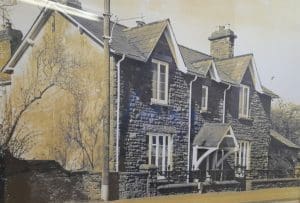 The site in Aylburton was not ideal. A new building in a different location was proposed. An open competition was held in 1906. A £5 award was offered for the best proposal. The offer of land on Bream Road, made by the first Viscount Bledisloe and his father, was accepted. Messrs Byard and Son of Gloucester built the new hospital that opened in 1908. It had two male wards upstairs and two female wards downstairs. It also had accommodation for nurses and servants. A management committee of 25 people was appointed.
The site in Aylburton was not ideal. A new building in a different location was proposed. An open competition was held in 1906. A £5 award was offered for the best proposal. The offer of land on Bream Road, made by the first Viscount Bledisloe and his father, was accepted. Messrs Byard and Son of Gloucester built the new hospital that opened in 1908. It had two male wards upstairs and two female wards downstairs. It also had accommodation for nurses and servants. A management committee of 25 people was appointed.
“The object of this institution is to afford prompt surgical aid in cases of accident and to supply skilled medical treatment, combined with good nursing, pure air, and suitable diet, to patients who cannot obtain these advantages in or near their own dwelling- For lending linen, and necessary articles to poor persons during sickness, and as opportunity offers, for providing a nurse”.
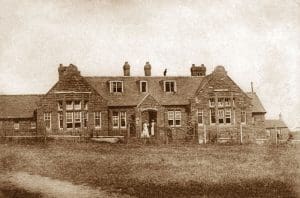 Regular fundraising dances and concerts were held in Lydney Town Hall. Mr. Rowlinson, the miner’s agent, helped get funds from the collieries. Hospital Sunday was an annual event, which provided much needed funding. It was set up by the Milkwall Charity Committee. The first event was held at the Scarr, near Sling, in 1911. Parades of Forest Bands marched to Scarr. It became so popular that a bandstand was built there in 1913.
Regular fundraising dances and concerts were held in Lydney Town Hall. Mr. Rowlinson, the miner’s agent, helped get funds from the collieries. Hospital Sunday was an annual event, which provided much needed funding. It was set up by the Milkwall Charity Committee. The first event was held at the Scarr, near Sling, in 1911. Parades of Forest Bands marched to Scarr. It became so popular that a bandstand was built there in 1913.
During the first World War the local Red Cross Society took over the hospital. Charles Bathurst was its president. A few beds were kept for local people. Nearly 3000 wounded British and Belgian soldiers were treated at the cottage hospital across the four war years. Lydney Town Hall was also converted into a hospital during the war.
Mr M. P. Price M.P. for the Forest of Dean declared that he firmly believed that the rising generation as a result of the various youth movements in the country today, would become more and more healthy and there would be less need for hospitals.
Gloucester Citizen 1939
 Taxation began to rise after the war. This affected donations made to charities. Lydney Hospital introduced a contributory scheme to help generate income. Contributors could access free treatment. Employees of the tin-plate works were among the first to join. Between 1928 and 1938 new equipment was installed, including a violet-ray machine, wireless, X-ray equipment and an operating table. A kitchen, offices, a dining room, nurses’ quarters, and a new ward for children were also built. Mr John Watts became chair of the hospital committee in 1934. The Bertha Bledisloe Maternity wing was added in 1938.
Taxation began to rise after the war. This affected donations made to charities. Lydney Hospital introduced a contributory scheme to help generate income. Contributors could access free treatment. Employees of the tin-plate works were among the first to join. Between 1928 and 1938 new equipment was installed, including a violet-ray machine, wireless, X-ray equipment and an operating table. A kitchen, offices, a dining room, nurses’ quarters, and a new ward for children were also built. Mr John Watts became chair of the hospital committee in 1934. The Bertha Bledisloe Maternity wing was added in 1938.
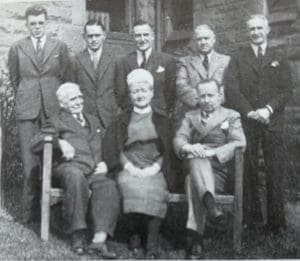 World War 2 began in 1939. In that same year the hospital admitted 605 inpatients and treated 2,005 outpatients. An enhanced contributory scheme was introduced in 1943 and a shop run by volunteers sold everything from collar studs to furniture. The shop closed in 1946 having raised over £1500 for the hospital. In 1947, its final year as a voluntary institution, the committee purchased Oakfield in Hill Street for use as a nurse’s home.
World War 2 began in 1939. In that same year the hospital admitted 605 inpatients and treated 2,005 outpatients. An enhanced contributory scheme was introduced in 1943 and a shop run by volunteers sold everything from collar studs to furniture. The shop closed in 1946 having raised over £1500 for the hospital. In 1947, its final year as a voluntary institution, the committee purchased Oakfield in Hill Street for use as a nurse’s home.
In 1954 alone some 289 operations took place, with 224 babies delivered in the maternity unit. In 1963, a physiotherapy department was built as a memorial to the late Viscount and Bertha Lady Bledisloe.
Visitors to Lydney Hospital took a trip into the past this week, to the days before the National Health Service when medicine was a more primitive affair. A machine for rolling bandages and a tonsil guillotine were two more unusual items on display.
Centenary celebrations reported in The Citizen October 1982
 Melville Watts was the chair and driving force behind setting-up the Friends of Lydney Hospital in1969. Together with very many organisations, local people, and grateful patients they continued to support Lydney Hospital. The funds raised helped to purchase new equipment and furnishings that have benefited the staff and local population.
Melville Watts was the chair and driving force behind setting-up the Friends of Lydney Hospital in1969. Together with very many organisations, local people, and grateful patients they continued to support Lydney Hospital. The funds raised helped to purchase new equipment and furnishings that have benefited the staff and local population.
In 2016 the difficult decision was made to close the Dilke Memorial Hospital and Lydney and District Hospital to build a modern purpose-built hospital with upgraded facilities and infrastructure to serve the Forest of Dean. In April 2024 staff and services moved to the new hospital in Cinderford ensuring ongoing services for the Forest of Dean. The Minor Injuries and Illness team were amongst the last to leave the hospital. Several community services remain based in Lydney.
Written by Averil Kear (Vice-president Forest of Dean Local History Society) with contributions from society members and local historians, Friends of Lydney, and GHC staff.
Dr. Mangalore Laxumana Bangara 1881-1927
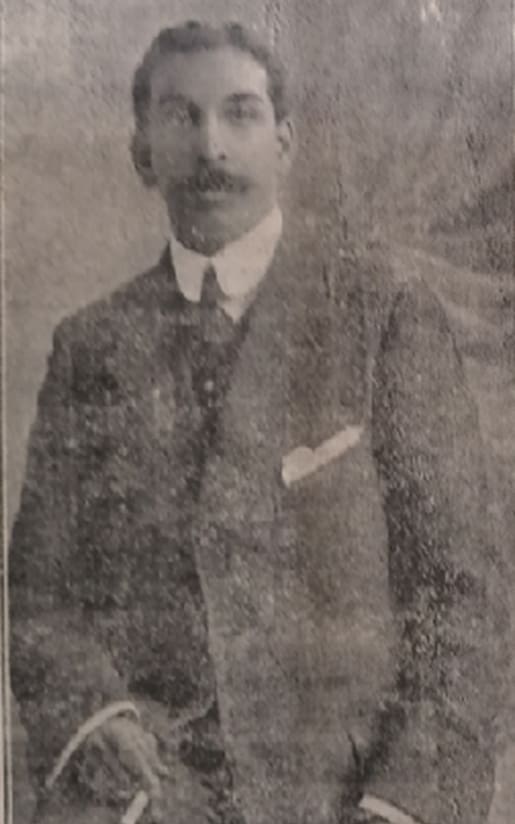 Written by Caroline Prosser-Lodge, Speech and Language Therapist (retired) and member of the Forest of Dean Local History Society.
Written by Caroline Prosser-Lodge, Speech and Language Therapist (retired) and member of the Forest of Dean Local History Society.
Mangalore Laxumana (ML) Bangara arrived in the UK in September 1906, aged 23 years. His destination was Edinburgh University Medical School, to continue medical studies commenced in Madras. ML Bangara was one of an increasing number of young people, primarily men, to make the journey from India and other British colonial countries to undertake training in the UK. Most came to train in professions such as medicine, law, and the sciences. The combined costs of coming to the UK and of attending university were high, rendering it accessible only to students from a relatively wealth background. A contemporary report states that ‘As a rule the Indian students in Edinburgh are the sons of professional men or successful merchants’. ML Bangara’s father, Mundappa M Bangara, was a judge within the British administration in the Indian state of Karnataka, Southern India. The Bangara family were members of the Brahma Samaj faith, which stood against regressive social practices and caste restrictions. This long-term faith was to influence many aspects of ML Bangara’s future life.
ML Bangara remained in Edinburgh for 8 years. During this time, he gained degrees in both Medicine and Surgery (1913), together with a qualification in Forensic Medicine (1912) and Public Health (1913). As a young trainee doctor, he would have been exposed to training in what were then ‘state of the art’ subjects including blood grouping, electrocardiography and, significantly, X-rays, a subject which was to influence his later role in the Forest of Dean.
Away from his studies ML Bangara became involved in the Indian student community, attaining the role of president of the Edinburgh Indian Association. During his time at the medical school, there was a relatively large international community at Edinburgh. Despite few reports of racial tension, colour segregation did however become prominent during the 1920’s. At a national level, the government was keen to impose a level of control on the overseas students, particularly those from the Indian sub-continent. This took the form proposing and later introducing a ‘guardianship’ scheme, which purported to have the good of the students at heart. Under the scheme an appointed British guardian could ‘take control of finances and exercise a certain amount of control’ over Indian students. Underlying this superficially altruistic and supportive approach for young men living far away from their homes lay the concern that these same young men could form bonds which would eventually undermine British control in India. ML Bangara was one of the many students to speak out against the proposed scheme. In a letter to the press, he pointed to the inequality of a guardianship scheme that applied to Indian students (but not to students from other countries such as Australia or Canada), commenting that most students “do not consider themselves so juvenile as to need gratuitous advice from an official advisor”.
It was usual for overseas students to return to their home countries on completion of their training. Dr Bangara, however, chose a very different career path. Rather than return to medical practice as the son of an influential judge in India, Dr Bangara instead came to the Forest of Dean and entered General Practice. It was 1915 and the world was in the throes of the First World War. Several local doctors had joined the War effort, resulting in a shortage of medical care in the area. It was to this situation that the young doctor came, taking up residence in Flaxley Street, Cinderford. It was a time of hardship nationally, but more specifically in the Forest of Dean. The first World War raged on until 1918, many young men from the area signing up or later being conscripted to serve in the armed forces. Some would never return to their homes, others would return, but many with life changing injuries, both physical and mental. As the war ended the world was hit by the Spanish Flu, which killed an estimated 50 million people worldwide. The Forest, already a poor area, was hit by numerous strikes, particularly in the mines. Run by the government during the War afterwards the mines were returned to the mine owners. However, demand for coal had diminished, with imported coal becoming cheaper than that produced at home. Colliery owners sought to cut wages and introduce shorter hours, to the detriment of the work force. Major strikes, lasting many weeks, occurred – with those of 1921 and 1926 in parts bringing much hardship to local workers and their families.
It was within this context that Dr Bangara established himself in practice and the local community. He remained in Cinderford from 1915 to 1927 when he died. He did not marry but became very actively involved in the life of his adopted community, both professionally and through a wide range of external interests. He served on numerous committees, most notably those focussed on the needs of returning soldiers, local working people and their families. The doctor was thus closely involved in the building of the Dilke Hospital.
When the Hospital opened in June 1923, he was one of a small team of medics providing cover to the hospital, each taking weekly turns as the surgeon in residence. Recognising the need for X- ray equipment at the new hospital, Dr Bangara was instrumental in the establishment of a dedicated X-Ray department. He was able to oversee the channelling of funds, originally set up to provide a memento to the mother or widow of each man killed in the recent conflict, towards the purchase of this state-of-the-art equipment. He became the medic in charge of the new equipment.
Dr Bangara’s time in the Forest predates the establishment of the National Health Service. Although some employers did set up contributory schemes whereby workers could access a level of medical care, for many the inability to pay meant they had to go without such care. There are many anecdotal reports of Dr Bangara waiving his fees, or of giving a greater amount in change than had been the cost of the treatment, and of his making (anonymously) donations to funds set up to support workers’ families during the series of miners strikes etc. These contributions were not made in expectation of praise and were often mediated by one of his many local friends, such as an Anglican or Methodist minister. It is only through the tributes paid by these friends after his death that many of these acts of benevolence are known.
Dr Bangara was only ever to return to his homeland on two occasions. Firstly, he went back on completion of his medical training in 1914, shortly before coming to the Forest of Dean. The second visit was in 1924, when his father was taken ill. It wasn’t certain he would be able to return to the UK, and in consequence he was given a formal send off, with gifts including a portrait and a gold watch. He did, however, return to his Forest home the following year and served his community for a further two years before succumbing to complications after a bout of flu in April 1927. People from very diverse backgrounds, from Cinderford and the surrounding areas, turned out in vast numbers to mark his memorial service in Cinderford. The men and women to whom he provided medical care, members of the various committees on which he served, local dignitaries and large number of his personal friends all attended, and heard tributes paid by many, including ministers of multiple Christian faiths. The tributes attested to his devotion to service, his sympathy to those who were sorrowful and his skills in his medical practice. Dr Bangara’s cremated remains were later sent on the long journey back to India, to be laid to rest near his father. Following his death a memorial was placed outside the X-Ray department at The Dilke, in gratitude for his service. It concludes with words used at his memorial service in Cinderford and his committal in India: ‘He lived for mankind’.
A more detailed account of Dr Bangara’s life can be found in The New Regard, The journal of the Forest of Dean Local History Society, Vol 38, 2024 pp 69-84. Welcome to the Forest of Dean Local History Society website » Forest of Dean Local History Society (forestofdeanhistory.org.uk)
Some of the last photographs taken at the hospitals prior to closure in Spring 2024
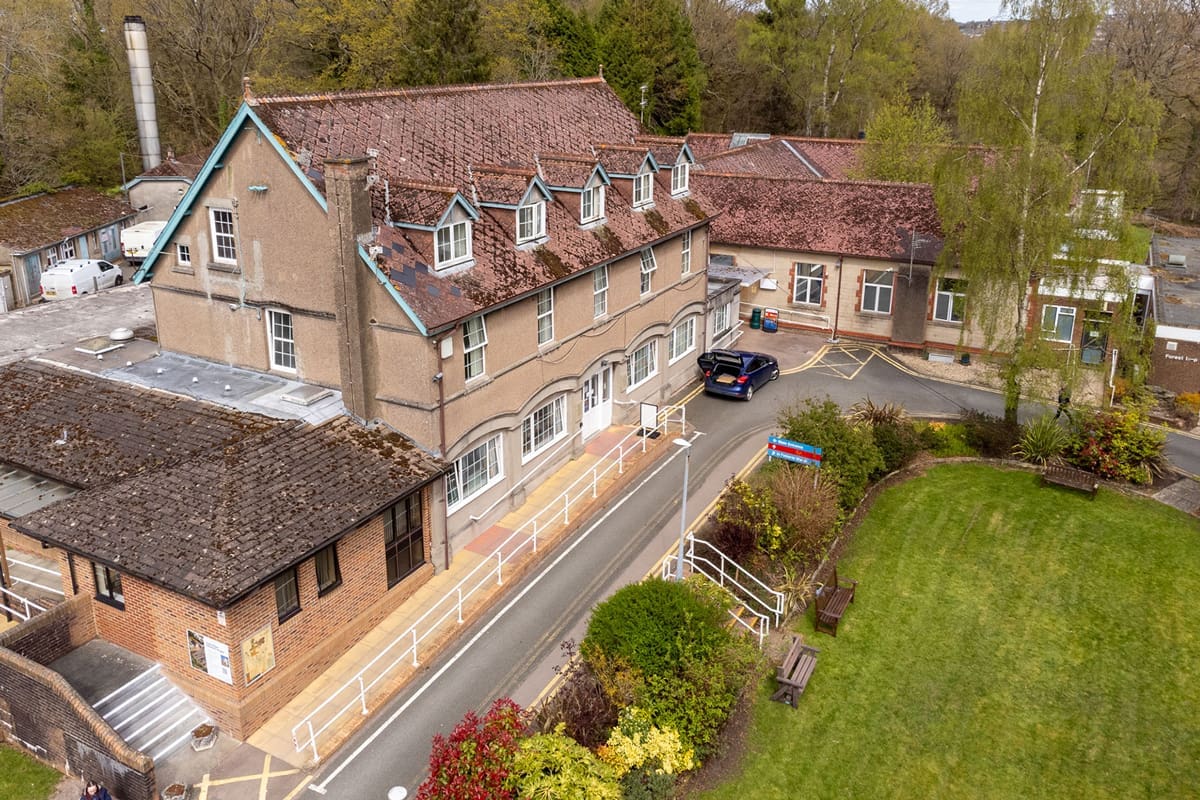

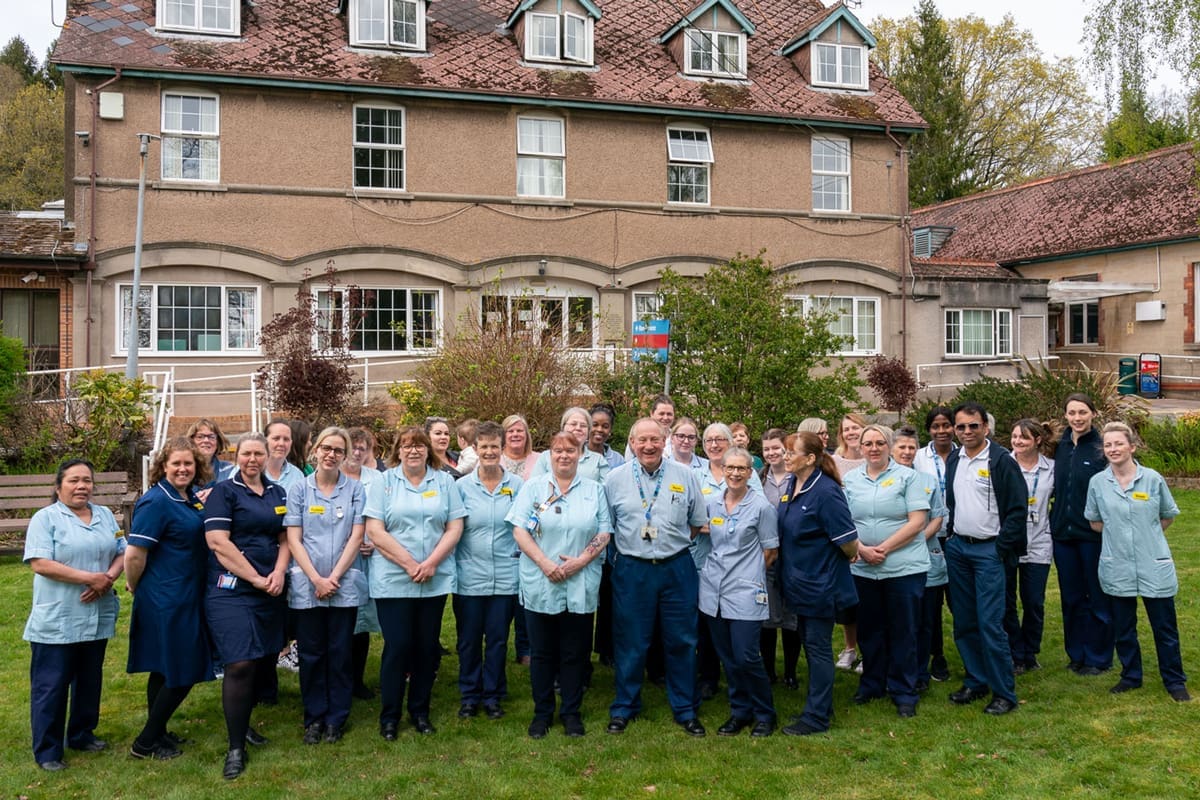

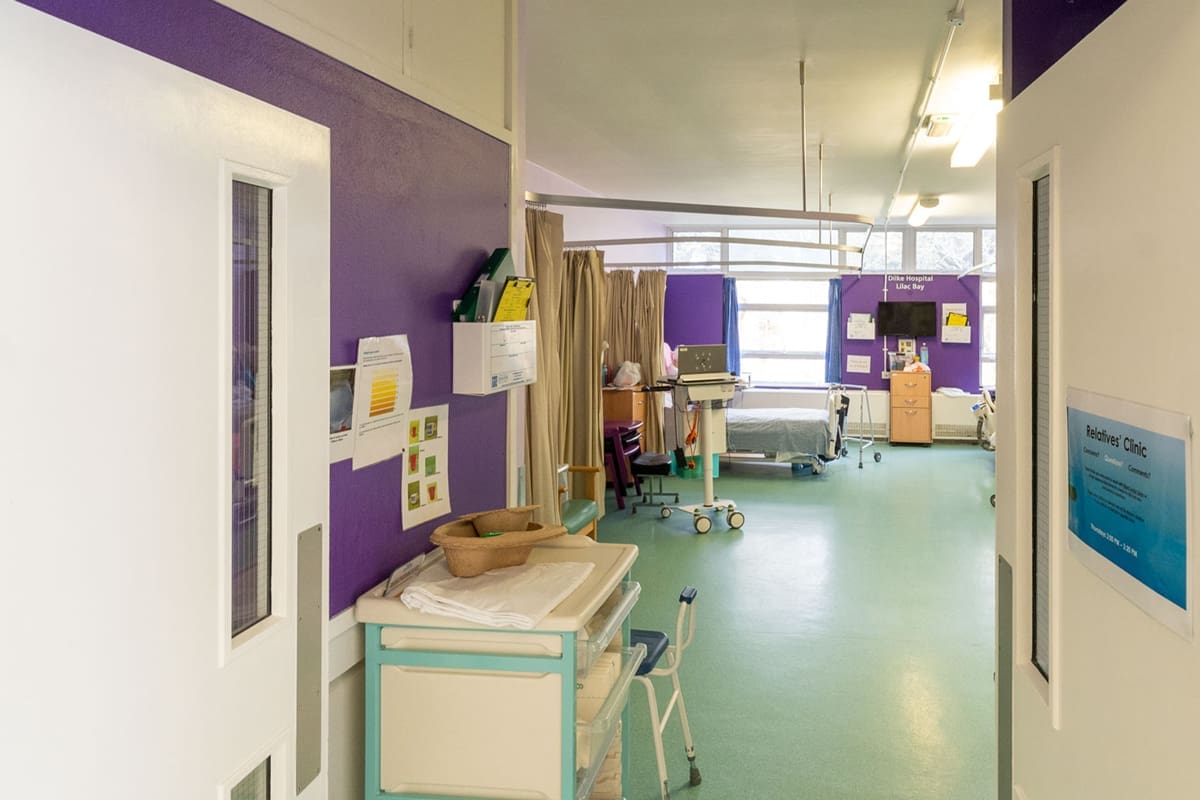
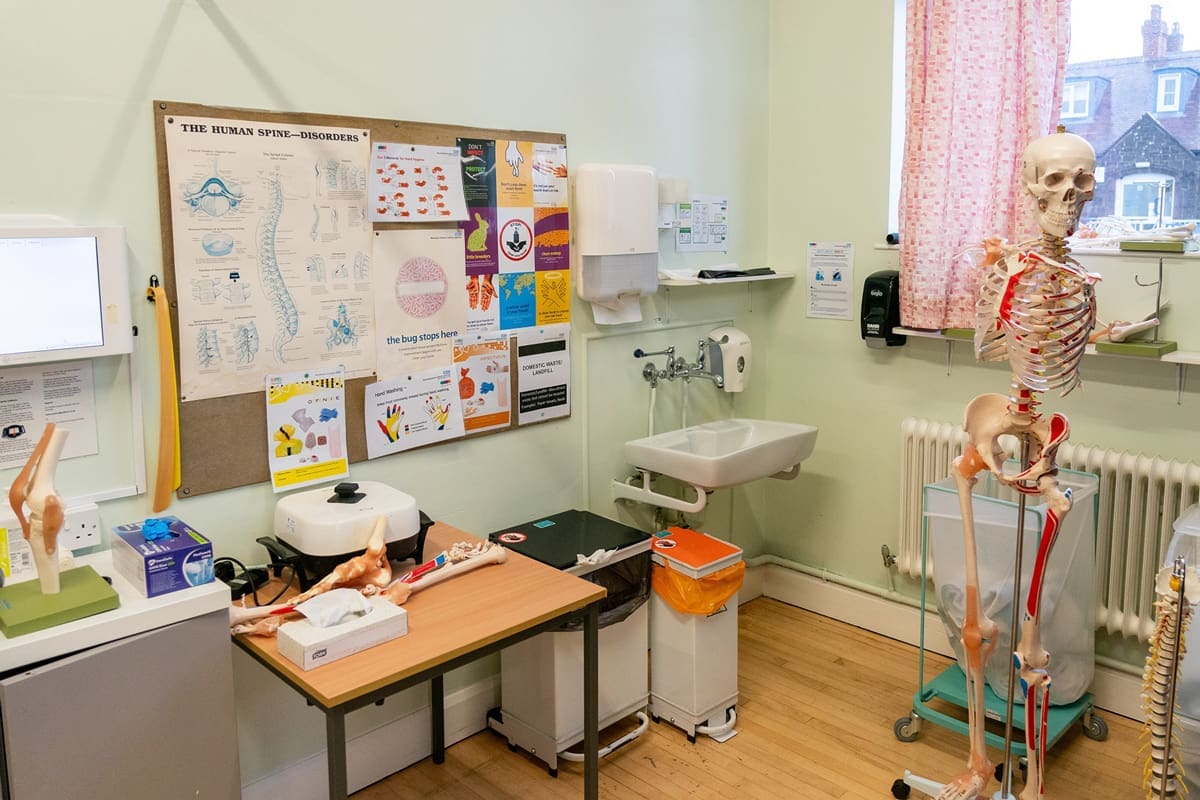
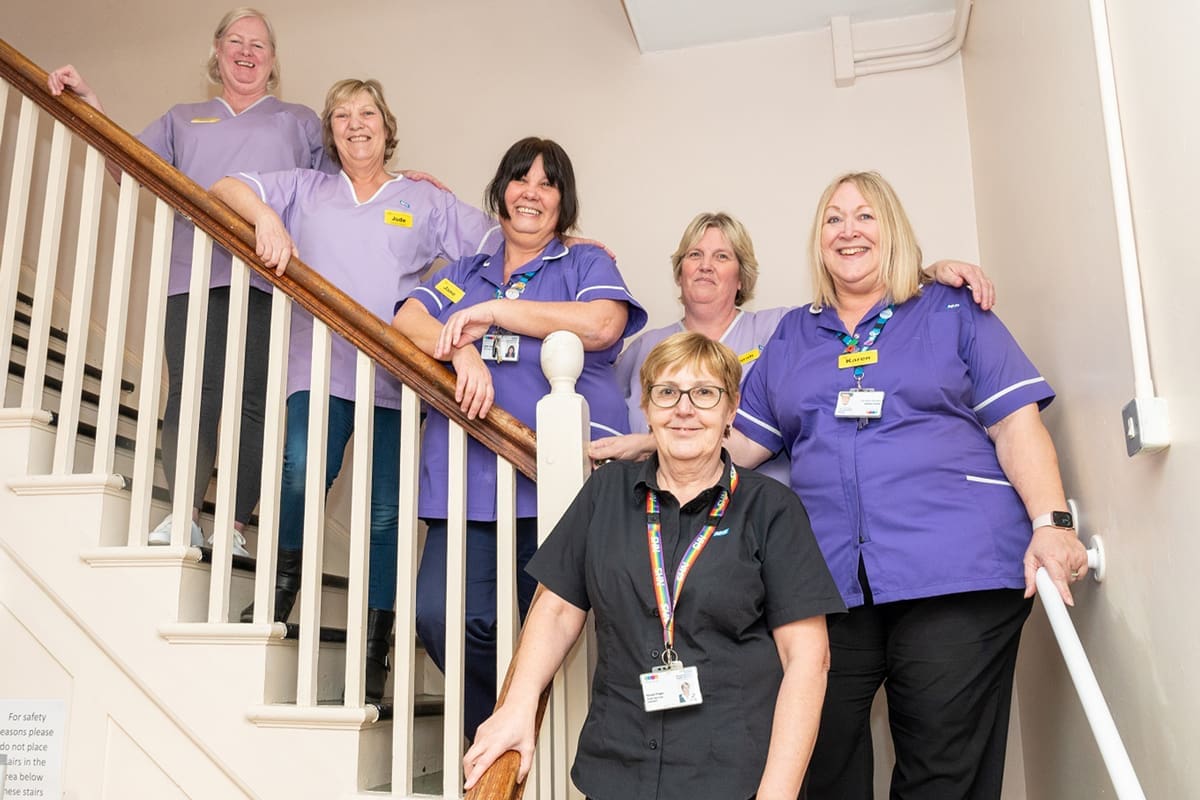
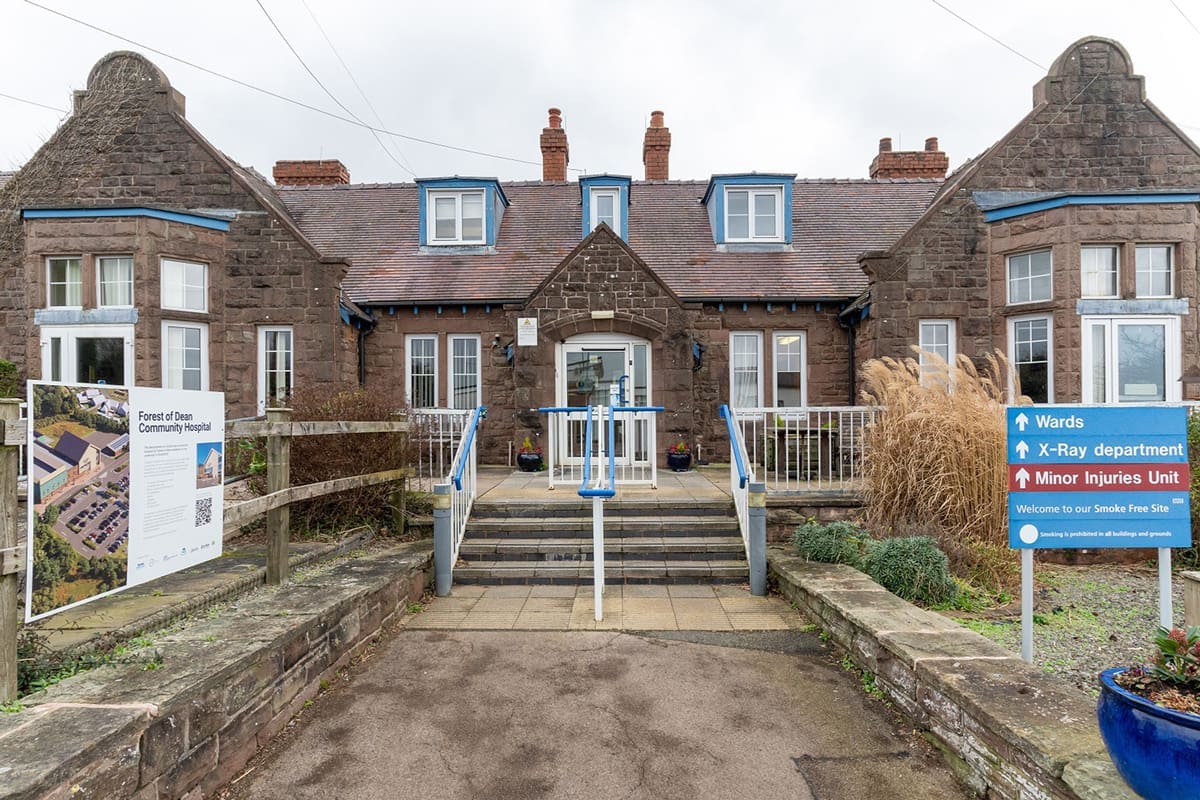
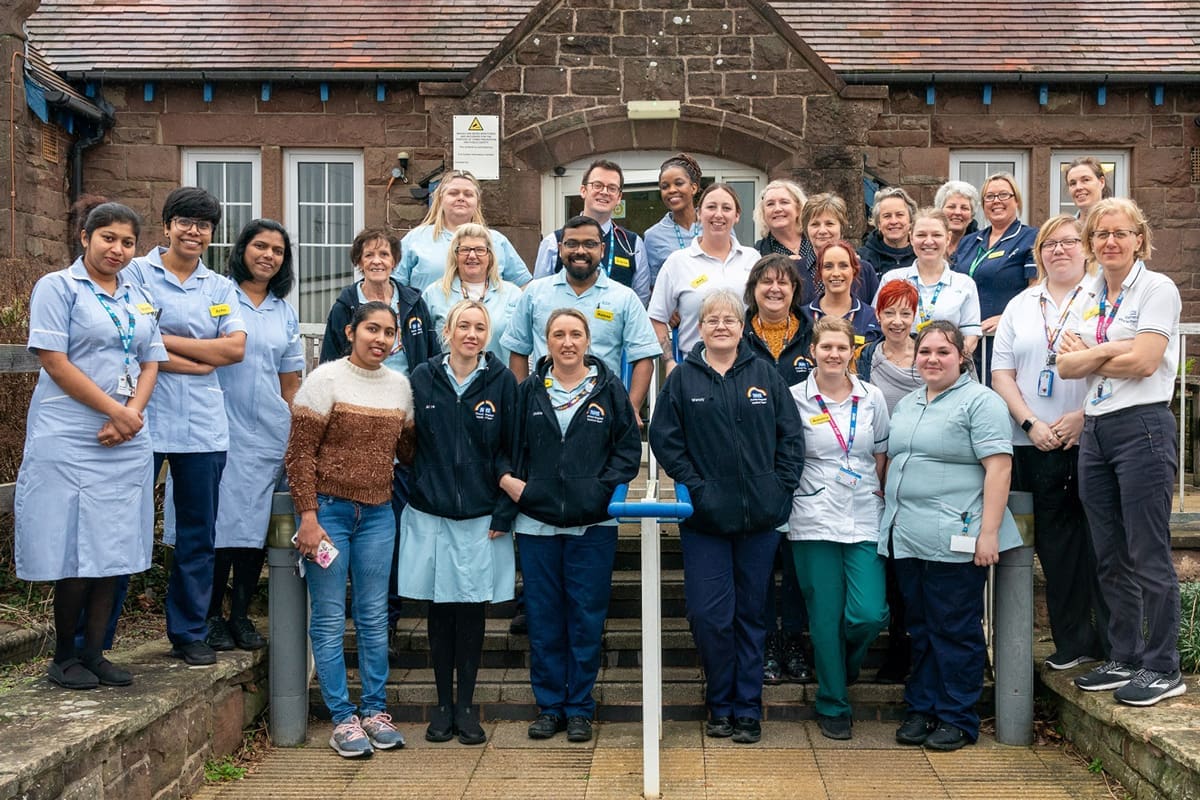

 Mary Elizabeth Bathurst of Lydney Park suffered from health issues that left her paralysed. She wanted to help other people in similar situations by establishing a local hospital.
Mary Elizabeth Bathurst of Lydney Park suffered from health issues that left her paralysed. She wanted to help other people in similar situations by establishing a local hospital.